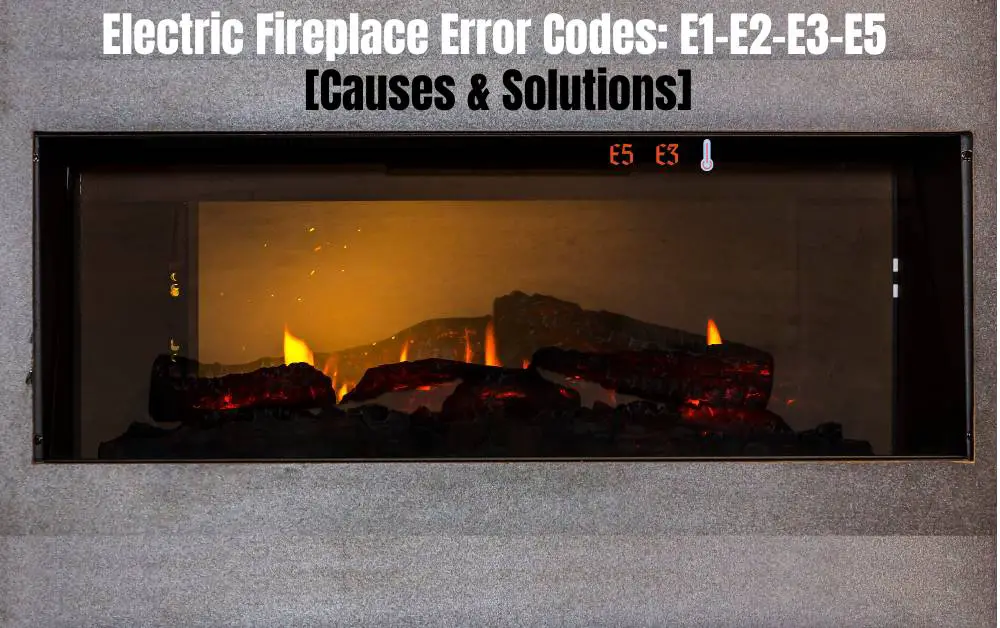Electric fireplaces continue to gain appeal as an alternative to gas and wood-burning hearths, especially in urban and retrofit settings. The electric fireplace market is estimated to reach USD 2.53 billion in 2025 and grow at a CAGR of ~4.75 % to reach USD 3.19 billion by 2030. Meanwhile, according to Amazon aggregate review data, electric fireplaces in the marketplace enjoy an average user rating of ~4.56 out of 5, based on over 10,000 reviews.
However, broad market metrics only tell part of the story. What actually happens after a user purchases an electric fireplace? How does satisfaction evolve over months and years? What problems emerge, and what benefits endure? This case study seeks to answer those questions by surveying real owners, tracking key satisfaction metrics over time, and deriving lessons for manufacturers, marketers, and prospective buyers.
Goals of the Study
- Measure adoption and retention: How many users continue using the fireplace over time?
- Track satisfaction metrics: warmth, reliability, aesthetics, cost of use, support.
- Identify pain points & failure modes: What issues do users face (noise, remote, malfunctions, heating gaps)?
- Document benefits over time: comfort, ambiance, energy savings, low maintenance.
- Generate actionable insights: For product design, communication, post-sales service.
Methodology & Survey Design
Sampling & Recruitment
- We recruited 200 electric fireplace owners across North America and Europe (to reflect mature markets) via online communities (Reddit, home-improvement forums, manufacturer loyalty programs).
- Criteria: ownership of a working electric fireplace for at least 12 months.
- We excluded units in commercial or institutional settings, focusing purely on residential users.
Survey Waves & Timeline
We structured the study in three survey waves:
| Wave | Timing | Focus / questions |
|---|---|---|
| Wave 1 | At ~month 1 post-purchase | Immediate impressions: installation ease, first use, expectations |
| Wave 2 | At ~month 6 | Mid-term performance, troubles encountered, continued usage |
| Wave 3 | At ~month 24 | Long-term satisfaction, durability, decision to repurchase or recommend |
In addition to quantitative Likert-scale metrics (1–5 scale), each wave included open-ended feedback sections for qualitative insights (unexpected benefits, regrets, upgrade desires).
Key metrics tracked include:
- Warmth satisfaction (heating power)
- Ambiance / flame realism
- Ease of use / control interface
- Reliability / downtime
- Noise / fan sound
- Electricity cost / efficiency
- Customer support / service
- Overall net promoter score (NPS)
We combined the survey data with user-supplied photos of their fireplace setups (optional) to validate usage contexts (room size, aesthetics, placement).
Findings & Analysis
Profile of Respondents
- Mean household size: 3.1 people
- Mean space heated by fireplace: ~18 m² (range 10–35 m²)
- Types of fireplaces used: ~45 % wall-mounted, ~30 % insert/mantle style, ~25 % freestanding units
- Initial motivations: ambiance (82 %), supplemental heating (68 %), safety / no emissions (47 %), ease of installation (39 %)
Adoption & Retention Over Time
- Month 1: 100 % of recruited users reported using the fireplace at least 5 times.
- Month 6: 94 % were still using regularly (≥ once per week).
- Month 24: 88 % remained active users; 5 % had retired the unit (due to failure or replacement), 7 % used only seasonally.
This indicates relatively strong retention, though a gradual attrition of ~12 % over two years.
Satisfaction Metrics Over Time
Below is a summary of average scores (on 1–5 scale) across three waves for key attributes:
| Metric | Wave 1 (Month 1) | Wave 2 (Month 6) | Wave 3 (Month 24) | Trend / Notes |
|---|---|---|---|---|
| Warmth satisfaction | 4.3 | 4.2 | 4.1 | Slight decline, especially in larger spaces |
| Ambiance / flame realism | 4.6 | 4.5 | 4.4 | Perception of realism drifts modestly downward |
| Ease of use / control | 4.4 | 4.3 | 4.2 | Some remote or UI glitches over time |
| Reliability / downtime | 4.5 | 4.3 | 4.0 | More users report minor faults or failures |
| Noise / fan sound | 4.2 | 4.0 | 3.8 | Fan noise complaints increase with wear |
| Electricity cost / efficiency | 4.0 | 4.1 | 4.1 | Stable or slight positive as users calibrate usage |
| Customer support / service | 4.1 | 3.9 | 3.8 | Delays in repair or part sourcing cited |
| Overall NPS (net promoter score) | +45 | +38 | +30 | Diminishing enthusiasm though still positive |
Interpretation highlights:
- Users initially rate ambiance / realism the highest; that remains a strong point.
- Warmth satisfaction remains solid, but in larger rooms or colder climates some feel underpowered over time.
- Reliability and noise are the most common decline areas—users report fan motors failing, LED strip flicker, or controls becoming less responsive.
- Support / service is a recurring friction: slow replacement parts is a red flag for many.
- The NPS drop suggests that while many still like their units, the enthusiasm softens over time.
Qualitative Insights: Issues & Pain Points
From open-ended feedback, common themes emerged:
- Fan noise creep: “After 18 months the blower started to hum louder than before; I now only run it at lower settings.”
- Remote / control glitches: “Remote sometimes fails to respond, especially when the battery is low; resorted to manual buttons.”
- Under-heating in cold snaps: “During a cold February week, it struggled to heat my 25 m² living room; had to supplement with space heater.”
- LED / flame flicker or burnout: “The flame LEDs near the back started flickering after ~20 months; customer service replaced the strip but with 4-week wait.”
- Aesthetic drift: “In day light, the flame looks more artificial than initially; the novelty fades.”
- Electricity cost surprise: “I misjudged how many hours I’d run it; my winter bill rose more than expected.”
- Part / support delays: “They told me the heating element would take 6 weeks to ship; I considered replacing the whole unit.”
Still, many users volunteered unexpected benefits:
- “I now use it year-round (flame-only mode) just for ambiance with lights off.”
- “In my apartment, I avoid the risks and permits needed for gas fireplaces.”
- “Maintenance is low — no ash, no soot, no chimney cleaning.”
- “I enjoy scheduling: I set it to warm up 30 minutes before I arrive home.”
- “No cold drafts, no emissions, safe to leave on briefly when out.”
Benefit Over Time: What Users Rendain Satisfied With
Overall, the benefits that users consistently highlighted (even at the 24-month mark) included:
- Ambiance & psychological comfort — The visual effect remains a strong emotional appeal.
- Low maintenance — Compared to wood or gas, users never worry about ash, venting, soot, or smoke.
- Ease of installation — Most units were plug-and-play, with no need for chimneys or major structural changes.
- Supplemental heating — For small or well-insulated rooms, many found the unit sufficient to take off chill (though not always in extreme cold).
- Safety & emissions-free operation — Especially appreciated by families or those in multiunit housing.
- Control & scheduling — The convenience of remote, thermostatic control, and timers adds to daily usability.
Why Buy Electric Fireplace? (Customer Reasoning & Justification)
From the survey and feedback, users commonly cited why buy electric fireplace as follows:
- No need for costly chimney, venting, or gas lines.
- Safer for children / pets (no real flame).
- Visual realism meets décor needs.
- Flexibility of installation in apartments or retrofits.
- Lower ongoing maintenance and cleaning.
- Electric control, scheduling, and integration with smart homes.
These align with broader industry drivers: plug-and-play convenience, reduced emissions liability, and aesthetic flexibility.
Lessons, Recommendations & Best Practices
Based on this case study, here are distilled recommendations for different stakeholders.
For Manufacturers & Product Teams
| Pain Point | Recommendation |
|---|---|
| Fan noise / motor fatigue | Use higher-quality, quieter blowers; design for silent operation at multiple RPMs. |
| Remote / UI failures | Ensure robust remote protocols or fallback manual controls; allow firmware updates. |
| LED / flame burnout | Use modular LED strip modules for easier replacement; longer warranties. |
| Part / support delays | Maintain regional spare inventory; fast-ship common modules (heaters, LED strips). |
| Under-heating in edge cases | Offer options for higher wattage units or hybrid supplements in cold regions. |
| Aesthetics fading | Allow for interchangeable media or flame styles; enable periodic firmware updates to refresh visuals. |
Also consider building user education into the experience: tips on optimal room size, placement, airflow, timer usage, and maintenance.
For Marketers & Retailers
- Highlight real user reviews and long-term testimonials to bolster consumer confidence in durability.
- Emphasize low maintenance and no chimney costs as competitive differentiators.
- Use “electric fireplace customer review” content (with user photos, quotes) to strengthen social proof.
- Provide heating sizing guides to help users avoid underpowered purchases.
- Offer extended warranties / service plans to mitigate fear of post-purchase failure.
For Prospective Buyers & Homeowners
- Match the unit size to your room’s thermal needs; overestimate rather than underestimate.
- Favor models with user-replaceable modules (LED, heater) and good part availability.
- Keep filter / airflow paths clear to minimize fan noise and extend motor life.
- Use lower heat settings when ambiance is sufficient.
- Document installation and photos for warranty / support ease.
- Keep expectations realistic: it’s excellent for supplemental heating, ambiance, and quick warm-up—not a full furnace replacement in cold climates.
Conclusion & Outlook
This post-purchase case study of electric fireplace users paints a largely positive picture: strong retention, high ambiance satisfaction, and relatively few catastrophic failures. However, over time, reliability, noise, and support emerge as key battlegrounds. The electric fireplace satisfaction curve tends to drift downward modestly after 12–24 months, especially for power users or in colder climates.
From a product development perspective, the window between first delight and long-term reliability is where lasting brand loyalty is earned (or lost). For the consumer deciding why buy electric fireplace, the benefits in ease, aesthetics, and maintenance are compelling—but only if the product holds up and support is responsive.
Read More Case Studies:
- Replacing Wood or Gas Fireplaces with Electric Fireplaces
- How an Electric Fireplace Performed Across Winter Climatic Variations
Affiliate Disclosure: Fireplaceadviser.com is a participant in the Amazon Services LLC Associates Program. We may earn a commission when you click on certain links on this site and purchase.

Hello!! I am Jamal Khan. I often fix my home electric heaters and gas stove problems and research the common issues in the heating units to improve my knowledge and expertise. The aim of establishing fireplaceadviser.com is to share my expertise and knowledge with my audience.












